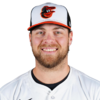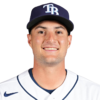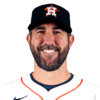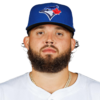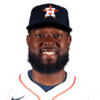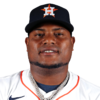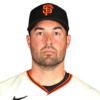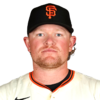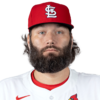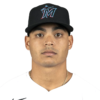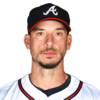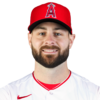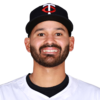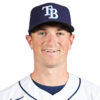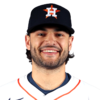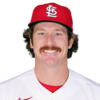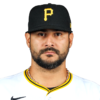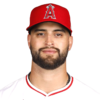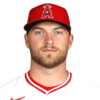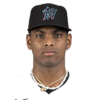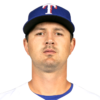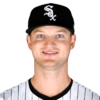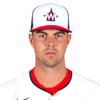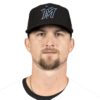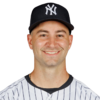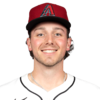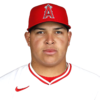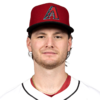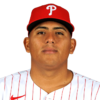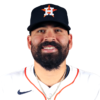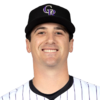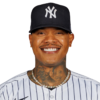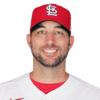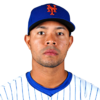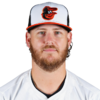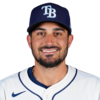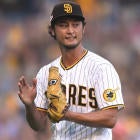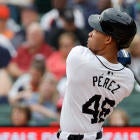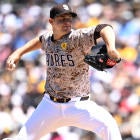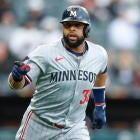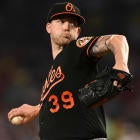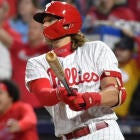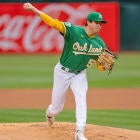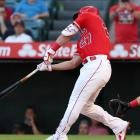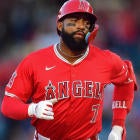
Well, it's happened. The pendulum has swung the other way. Those years when starting pitching dominated the early rounds, even in spite of its volatility, already feel like a distant memory.
And from the perspective of all of Fantasy Baseball history, they were nothing more than a blip, a glimpse into an alternate reality in which home runs are easy to hit. They came with such frequency, from every spot in the lineup, that a pitcher had to be one of the absolute best to be halfway good at all. We call it the juiced ball era, and hopefully, sometime soon, we will speak of it no more.
But not yet. You see, Fantasy Baseball has existed for long enough that even a relative blip can start to feel comfortable. It's like wearing a new pair of pants for a week. It didn't feel right at first, but now it's the old pair that doesn't feel right. And if you've played the game for less than seven years, last year was your first time slipping into those old pants.
Position Strategy: C | 1B | 2B | 3B | SS | OF | SP | RP
Fair to say we're still adjusting to the fit. I think people generally get that starting pitching is less of a priority now. Average draft position, at least for leagues that use traditional 5x5 scoring, shows no pitchers going in Round 1 when it might have been three or four in the not-so-distant past. But I think the adjustment should be more drastic than that. There's not a starting pitcher I'd take in the first two rounds, and the thought of taking one typically doesn't enter my mind until Round 4.
To demonstrate why, I'll use Head-to-Head points scoring. It's a different format, but it gets the point across easier. Two years ago, 16 pitchers averaged more than 16 points per start. Last year, it was 25.
There's nothing special about the number 16 particularly, but no matter what threshold you use, you'll find an increase of 6-12 pitchers from one year to the next. And 2021 wasn't even firmly in the juiced ball era. Go back to 2020 or, even more so, 2019, and the difference is night and day. In just a couple years' time, the position has gone from having essentially no middle class to one that spans more than half the draft.
Factor in the reciprocal effect, that a deepening pitcher crop means a dwindling hitter crop, and you can probably guess where the scarcities now lie. It's especially true at third base, second base and the outfield, all of which are critical to fill early, such that I couldn't even imagine drafting a starting pitcher instead.
And did I mention that pitching is inherently more volatile?
| 2023 ADP | 2022 PPG | 2022 ERA | 2022 K/9 | |
|---|---|---|---|---|
Shohei Ohtani
LAA DH
| 13? | 17.95 | 2.33 | 11.9 |
Corbin Burnes
MIL SP
| 18 | 16.99 | 2.94 | 10.8 |
Gerrit Cole
NYY SP
| 19 | 16.99 | 3.50 | 11.5 |
Sandy Alcantara
MIA SP
| 25 | 19.48 | 2.28 | 8.2 |
Jacob deGrom
TEX SP
| 31 | 19.09 | 3.08 | 14.3 |
Spencer Strider
ATL SP
| 33 | 13.07 | 2.67 | 13.8 |
Brandon Woodruff
MIL SP
| 35 | 16.67 | 3.05 | 11.2 |
Shane McClanahan
TB SP
| 36 | 17.50 | 2.54 | 10.5 |
Dylan Cease
CHW SP
| 38 | 16.23 | 2.20 | 11.1 |
Aaron Nola
PHI SP
| 41 | 16.20 | 3.25 | 10.3 |
Justin Verlander
NYM SP
| 42 | 21.48 | 1.75 | 9.5 |
Max Scherzer
NYM SP
| 44 | 19.24 | 2.29 | 10.7 |
Carlos Rodon
NYY SP
| 48 | 16.63 | 2.88 | 12.0 |
Julio Urias
LAD SP
| 52 | 17.23 | 2.16 | 8.5 |
Zack Wheeler
PHI SP
| 55 | 16.29 | 2.82 | 9.6 |
Shane Bieber
CLE SP
| 56 | 17.58 | 2.88 | 8.9 |
Alek Manoah
TOR SP
| 61 | 18.48 | 2.24 | 8.2 |
Max Fried
ATL SP
| 65 | 17.47 | 2.48 | 8.3 |
I put a question mark next to Shohei Ohtani's ADP because he's only being drafted that high for his hitting prowess. In leagues that separate him into two players, the pitcher version should go somewhere in the vicinity of Carlos Rodon and Julio Urias ... I guess, maybe. Frankly, it's hard to quantify because my rankings are so different from ADP.
For instance, I have Justin Verlander No. 1 in 5x5 leagues. Why not? It's where he placed last year, leading the majors in both ERA and WHIP, and his track record suggests stability at a position known for its volatility. Sure, he's 40, but amid the many risk factors at this position, age ranks fairly low. In fact, you could argue it's an advantage. It means he's battle-tested, already proven to hold up to the rigors of a major-league season, which makes him more likely to deliver the sort of workload expected of an ace. I rank Max Scherer No. 2 in 5x5 leagues for the same reason.
In points leagues, my top choice is Sandy Alcantara. Half of his starts last year went more than seven innings, which is such an enormous outlier in an era of diminished workloads that his ERA could rise a full run and he'd still probably come out on top in that format.
But it doesn't really matter who I rank first if I don't start itching for pitching until Round 4, preferably after using my first three picks on an outfielder, third baseman and second baseman. I specify my favorites merely to demonstrate the elasticity at the top. With so many in the discussion, why pay up for the best, particularly when we're talking about a range of more than two rounds among the deserving favorites?
You know what? If I begin my draft with five hitters and Max Fried ends up being my ace, I'm fine with it. It's not the ideal scenario, but the surplus of high-end pitching justifies it.
| 2023 ADP | 2022 PPG | 2022 ERA | 2022 K/9 | |
|---|---|---|---|---|
Luis Castillo
SEA SP
| 64 | 15.62 | 2.99 | 10.0 |
Kevin Gausman
TOR SP
| 66 | 13.86 | 3.35 | 10.6 |
Cristian Javier
HOU SP
| 68 | 14.00 | 2.54 | 11.7 |
Zac Gallen
ARI SP
| 70 | 17.32 | 2.54 | 9.4 |
Framber Valdez
HOU SP
| 79 | 18.10 | 2.82 | 8.7 |
Yu Darvish
SD SP
| 81 | 18.85 | 3.10 | 9.1 |
Joe Musgrove
SD SP
| 84 | 15.47 | 2.93 | 9.2 |
Triston McKenzie
CLE SP
| 86 | 15.97 | 2.96 | 8.9 |
Tyler Glasnow
TB SP
| 92 | 19.25^ | 2.66^ | 12.6^ |
Robbie Ray
SEA SP
| 96 | 13.78 | 3.71 | 10.1 |
Logan Webb
SF SP
| 103 | 15.11 | 2.90 | 7.6 |
Logan Gilbert
SEA SP
| 106 | 14.44 | 3.20 | 8.4 |
^2021 stats
Of course, in that scenario in which Fried is my ace, I'm probably going to need two from this group, particularly in a league with 12 teams or fewer and particularly in one that uses points scoring. Fortunately, it should be pretty easy to do since this list of names takes us through Round 9.
Again, I'm not particularly inclined to pick favorites since it's ultimately the values that matter more to me. I will point out, though, that Yu Darvish, Luis Castillo, Zac Gallen and Kevin Gausman, in that order, came closest to slotting with the previous group. And in points leagues, the same is true for Framber Valdez given that he's second only to Sandy Alcantara in workload expectations (albeit a distant second).
I love the upside of Cristian Javier, whose high fly-ball rate combined with his elite swing-and-miss skills should make him near unhittable some nights, particularly now that fly balls are no longer such a threat to go out (due to the lack of juiced ball and all). On the other hand, I'm leery of drafting Tyler Glasnow even though he might have the most upside of this group. It'll be his first full year back from Tommy John surgery, and he still has yet to last even 120 innings in a big-league season.
| 2023 ADP | 2022 PPG | 2022 ERA | 2022 K/9 | |
|---|---|---|---|---|
Nestor Cortes
NYY SP
| 108 | 16.73 | 2.44 | 9.3 |
Kyle Wright
ATL SP
| 109 | 17.50 | 3.19 | 8.7 |
George Kirby
SEA SP
| 110 | 12.38 | 3.39 | 9.2 |
Luis Severino
NYY SP
| 114 | 14.63 | 3.18 | 9.9 |
Hunter Greene
CIN SP
| 121 | 9.67 | 4.44 | 11.8 |
Clayton Kershaw
LAD SP
| 127 | 18.16 | 2.28 | 9.8 |
Blake Snell
SD SP
| 131 | 12.69 | 3.38 | 12.0 |
Nick Lodolo
CIN SP
| 136 | 10.66 | 3.66 | 11.4 |
Lance Lynn
CHW SP
| 139 | 13.29 | 3.99 | 9.2 |
Freddy Peralta
MIL SP
| 144 | 10.11 | 3.58 | 9.9 |
Jesus Luzardo
MIA SP
| 151 | 13.56 | 3.32 | 10.8 |
Tony Gonsolin
LAD SP
| 153 | 18.40 | 2.14 | 8.2 |
Dustin May
LAD SP
| 163 | 8.58 | 4.50 | 8.7 |
Charlie Morton
ATL SP
| 175 | 11.79 | 4.34 | 10.7 |
Chris Sale
BOS SP
| 176 | 12.33^ | 3.16^ | 11.0^ |
Jeffrey Springs
TB SP
| 184 | 10.64 | 2.46 | 9.6 |
Kodai Senga
NYM P
| 192 | ----- | 1.89# | 9.7# |
^2021 stats
#stats from Japan
If my Nos. 4 and 5 starters come from this group, I'll be happy as a clam. I say they're not aces, but realistically, any of them could end up performing like one. Nestor Cortes and Kyle Wright basically did last year. So did Luis Severino, Clayton Kershaw, Tony Gonsolin for the time they were healthy. I think they all basically maxed out their upside (unless one of the latter three is unusually healthy), which is why I wouldn't presume to call any of them aces now. But hey, it could happen.
Meanwhile, George Kirby, Hunter Greene and Nick Lodolo are three of the most popular breakout picks at the position, with Jesus Luzardo and Dustin May offering plenty of untapped potential themselves. Jeffrey Springs just needs to start going deeper into games, and Kodai Senga offers a world of promise coming over from Japan.
My favorites to draft from this group, though, are a trio of former aces that I think have been written off too soon. Lance Lynn scuffled after returning from a torn meniscus last summer but recovered to deliver a 2.18 ERA over his final 10 starts and had a career-high swinging-strike rate overall. Charlie Morton uncharacteristically struggled with the long ball, but his velocity and the elite spin on his curveball are still intact. Chris Sale looked strong in his return from Tommy John surgery two years ago and missed most of last year with a stress fracture in his ribcage and a fractured wrist, two injuries that shouldn't crop up again or have any bearing on his future performance.
| 2023 ADP | 2022 PPG | 2022 ERA | 2022 K/9 | |
|---|---|---|---|---|
Joe Ryan
MIN SP
| 147 | 13.72 | 3.55 | 9.2 |
Chris Bassitt
TOR SP
| 149 | 15.18 | 3.42 | 8.3 |
Luis Garcia
HOU SP
| 158 | 14.34 | 3.72 | 9.0 |
Lucas Giolito
CHW SP
| 162 | 10.48 | 4.90 | 9.9 |
Jordan Montgomery
STL SP
| 165 | 13.03 | 3.48 | 8.0 |
Pablo Lopez
MIN SP
| 169 | 12.38 | 3.75 | 8.7 |
Drew Rasmussen
TB SP
| 183 | 13.16 | 2.84 | 7.7 |
Lance McCullers
HOU SP
| 199 | 16.25 | 2.27 | 9.4 |
Jon Gray
TEX SP
| 206 | 11.71 | 3.96 | 9.5 |
Miles Mikolas
STL SP
| 209 | 14.53 | 3.29 | 6.8 |
Jack Flaherty
STL SP
| 217 | 6.61 | 4.25 | 8.3 |
Merrill Kelly
ARI SP
| 219 | 14.83 | 3.37 | 8.0 |
Tyler Anderson
LAA SP
| 226 | 16.67 | 2.57 | 7.0 |
Jose Berrios
TOR SP
| 241 | 10.48 | 5.23 | 7.8 |
Martin Perez
TEX SP
| 281 | 14.70 | 2.89 | 7.8 |
"Also fine?" I'm over here yeah whatever-ing these guys when Chris Bassitt averaged more than 15 points per start last year, with nothing in his track record suggesting it was a fluke. It's not meant to slander him but to further denote how much pitching talent there is to go around. Bassitt is probably the most bankable of this group, but all of them seem like the kind of pitchers you'll want to keep on your roster all season, barring injury.
The two most interesting subgroups are the former aces looking to rebound -- i.e., Lucas Giolito, Jose Berrios and Jack Flaherty -- and the post-juiced ball surprises -- i.e., Miles Mikolas, Merrill Kelly, Tyler Anderson and Martin Perez. I'm not afraid to draft any of them, but the price for Giolito seems kind of high relative to Berrios and Flaherty, especially since his diminished velocity is the biggest red flag for any of them.
If I go cheap at starting pitcher, I might try to grab all of Mikolas, Kelly, Anderson and Perez late. They were basically must-start last year, but I get the impression that the people discounting them are still operating by the old rules, which said that a big strikeout rate is essential for success. Eliminating the juiced ball has changed the math there.
| 2023 ADP | 2022 PPG | 2022 ERA | 2022 K/9 | |
|---|---|---|---|---|
Grayson Rodriguez
BAL RP
| 196 | ----- | 2.62* | 13.0* |
Patrick Sandoval
LAA SP
| 205 | 11.09 | 2.91 | 9.1 |
Frankie Montas
NYY SP
| 221 | 9.56 | 4.05 | 8.9 |
Andrew Heaney
TEX SP
| 222 | 10.88 | 3.10 | 13.6 |
Reid Detmers
LAA SP
| 230 | 10.80 | 3.77 | 8.5 |
Edward Cabrera
MIA SP
| 234 | 12.39 | 3.01 | 9.4 |
Bailey Ober
MIN SP
| 246 | 10.68 | 3.21 | 8.2 |
Aaron Ashby
MIL SP
| 261 | 5.67 | 4.44 | 10.6 |
Trevor Rogers
MIA SP
| 265 | 5.57 | 5.47 | 8.9 |
Garrett Whitlock
BOS RP
| 282 | 7.45 | 3.45 | 9.4 |
Tyler Mahle
MIN SP
| 287 | 10.83 | 4.40 | 9.4 |
Drey Jameson
ARI SP
| 290 | 20.75 | 1.48 | 8.9 |
Michael Kopech
CHW SP
| 292 | 9.30 | 3.54 | 7.9 |
Noah Syndergaard
LAD SP
| 297 | 10.66 | 3.94 | 6.4 |
Mike Soroka
ATL SP
| 329 | 16.10^ | 2.68^ | 7.3^ |
MacKenzie Gore
WAS SP
| ----- | 7.56 | 4.50 | 9.3 |
Brayan Bello
BOS SP
| ----- | 3.50 | 4.71 | 8.6 |
Justin Steele
CHC SP
| ----- | 9.63 | 3.18 | 9.5 |
Braxton Garrett
MIA SP
| ----- | 9.12 | 3.58 | 9.2 |
Kenta Maeda
MIN SP
| ----- | 9.88^ | 4.66^ | 9.6^ |
Cody Morris
CLE SP
| ----- | 6.21 | 2.28 | 8.8 |
Brandon Pfaadt
ARI P
| ----- | ----- | 3.83* | 11.7* |
Jose Suarez
LAA SP
| ----- | 9.93 | 3.96 | 8.5 |
Ken Waldichuk
OAK SP
| ----- | 8.93 | 4.93 | 8.6 |
Roansy Contreras
PIT SP
| ----- | 8.76 | 3.79 | 8.2 |
Ryne Nelson
ARI SP
| ----- | 17.67 | 1.47 | 7.9 |
^last healthy season (2019 for Soroka, 2021 for Maeda)
*minor-league stats
A position as big as this one will naturally have a long list of sleepers, but you shouldn't need to rely on them so much this year. We're more than 60 players into the position by the time we reach this point, which should get you most of the way through a 12-team draft. Now, it's just about filling in the gaps on your roster.
And as far as that goes, pick your poison. The standouts to me are Grayson Rodriguez, the game's top pitching prospect who's positioned to make the opening day roster, and Reid Detmers, who came back and dominated after retooling his slider in the minors last year. We're grasping at straws with the rest of them, but maybe the Dodgers work their magic on Noah Syndergaard. Or maybe one of last year's reclamation projects, Andrew Heaney, finds a way to stay healthy with the Rangers. His per-inning numbers were ridiculous.
As far as the young guys go, I'd really like to see Cody Morris get a chance. He thoroughly impressed in the minors, albeit over a tiny sample because he couldn't stay healthy, and he delivered an elite swinging-strike rate in his first taste of the majors late last year.
| 2023 ADP | 2022 PPG | 2022 ERA | 2022 K/9 | |
|---|---|---|---|---|
Brady Singer
KC SP
| 190 | 14.11 | 3.23 | 8.8 |
Sonny Gray
MIN SP
| 210 | 12.23 | 3.08 | 8.8 |
Ranger Suarez
PHI SP
| 243 | 11.26 | 3.65 | 7.5 |
Alex Cobb
SF SP
| 247 | 10.84 | 3.73 | 9.1 |
Jose Urquidy
HOU SP
| 255 | 13.28 | 3.94 | 7.3 |
Jameson Taillon
CHC SP
| 264 | 13.58 | 3.91 | 7.7 |
Nathan Eovaldi
TEX SP
| 266 | 12.38 | 3.87 | 8.5 |
Eric Lauer
MIL SP
| 273 | 12.91 | 3.69 | 8.9 |
Cal Quantrill
CLE SP
| 274 | 14.03 | 3.38 | 6.2 |
Marcus Stroman
CHC SP
| 288 | 12.06 | 3.50 | 7.7 |
Carlos Carrasco
NYM SP
| 291 | 12.35 | 3.97 | 9.0 |
Ross Stripling
SF SP
| 294 | 11.30 | 3.02 | 7.4 |
Taijuan Walker
PHI SP
| 298 | 13.14 | 3.49 | 7.6 |
Adam Wainwright
STL SP
| 316 | 11.86 | 3.71 | 6.7 |
Eduardo Rodriguez
DET SP
| 324 | 10.88 | 4.05 | 7.1 |
Jose Quintana
NYM SP
| ----- | 10.67 | 2.93 | 7.4 |
Cole Irvin
BAL SP
| ----- | 11.77 | 3.98 | 6.4 |
Zach Eflin
TB SP
| ----- | 7.53 | 4.04 | 7.7 |
Just a little peek behind the curtain: I like to use last year's edition of this article as a template for this year, so I can tell you that this category is completely new. I had to add it to account for everyone who matters at the position, which is about 20 more than last year.
These pitchers are all lacking in upside, but there's no shame in drafting any of them to round out your pitching staff, particularly in points leagues that tend to go a little deeper into the pitcher pool. Mostly, it's a lack of strikeouts that holds them back, but if they can pile on innings and keep their ERAs respectable, they can rack up wins for you, which, for most scoring formats, is still the most valuable pitcher contribution of all.








